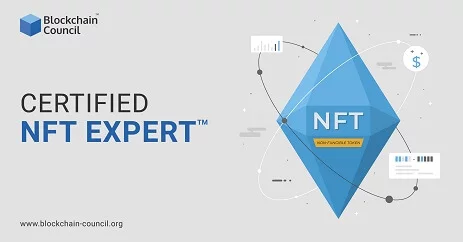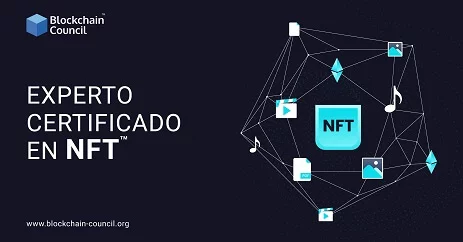
- Toshendra Kumar Sharma
- July 03, 2024
A Merkle tree, also defined as a binary hash tree, is a data structure used to efficiently summarize and validate large data sets. It’s a challenge to capture the meaning of Merkle Trees by using words alone. If you are engaged in the cryptocurrency world, you are likely to have not seen the phrase “Merkle Tree” and felt a little off track. Even within the crypto community, Merkle Trees are not a widely-understood concept, but they are also not that complex. In this article, we will answer the burning questions: What is a Merkle tree and how does it work?
You can go for Blockchain courses online and obtain a Blockchain technology certification.
Overview
The Merkle Tree has been all over the place since 1979 when there was a man named Ralph Merkle at Stanford University. Merkle wrote a paper titled “A Certified Digital Signature,” unknowingly creating a significant Blockchain component. In his paper, Merkle gave a description of a brand new method of proof-making. Primarily, Merkle designed a data verification process that would allow computers to work much faster than before. Merkle’s idea, now called the Merkle Tree, has fundamentally changed the world of cryptography, including how encrypted computer protocols work. As a result, Merkle Trees has grown in popularity over the years, especially in cryptocurrency. Many cryptocurrencies like Ethereum have also embraced Merkle Trees.
What are Merkle Trees?
A Merkle tree, pioneered by Ralph Merkle, stands as a cornerstone in cryptographic data structures, especially for large datasets. Its primary function is the efficient verification of data integrity, making it a crucial component in various applications, notably in Blockchain technology.
This cryptographic structure follows a binary tree arrangement, where individual data blocks serve as the leaves. Each non-leaf node, instead of containing the actual data, stores the cryptographic hash of its child nodes. This hierarchical hashing scheme ensures the integrity of the underlying data, providing a robust mechanism for detecting any unauthorized changes.
The dynamic nature of the Merkle tree becomes apparent when considering the impact of alterations to individual leaf nodes. Any change ripples upward, affecting the hashes of higher-level nodes, ultimately culminating in a modification of the root hash. This property makes Merkle trees highly reliable for detecting tampering or inconsistencies within a dataset.
In the context of Blockchain technology, Merkle trees play a pivotal role in ensuring the security and efficiency of data verification processes. As transactions are added to a block in a Blockchain, a Merkle tree is constructed from the transactional data. The root hash of this tree is then included in the block header, providing a concise yet secure representation of the entire set of transactions.
Working of Merkle Trees
A Merkle tree sums up all transactions in a block by generating a digital fingerprint of the whole set of operations, allowing the user to check whether a transaction is included in a block. Merkle trees are created by repetitively hashing pairs of nodes until only one hash is left, this hash is better called the Merkle Root or the Root Hash.
They are constructed from the bottom, from the hashes of individual transactions called Transaction IDs. Thus every leaf node is a hash of transactional data, and each non-leaf node is a hash of its previous hash. Merkle trees are binary and consequently require an equal number of leaf nodes. If the figure of transactions is odd, the last hash will be matched once it creates an even number of leaf nodes.
Data Segmentation
The first step in constructing a Merkle tree involves segmenting the data into fixed-size blocks. Each block represents a leaf node in the tree. This segmentation is crucial for organizing the data in a structured manner.
Leaf Node Hashing
For each leaf node, a cryptographic hash function is applied to the corresponding data block. This hash, unique to the data it represents, serves as a compact and secure representation of the original information.
Pairwise Hashing – Building the Tree
The tree construction begins by pairing adjacent leaf node hashes and hashing them together to create a parent node. This process continues iteratively until a single hash, known as the root hash or Merkle root, is obtained. The resulting tree is binary, with each non-leaf node having two children.
Efficient Verification
One of the key advantages of Merkle trees is the efficiency of integrity verification. To verify a specific piece of data, one only needs the path from the corresponding leaf node to the root. This path consists of the hashes of nodes encountered along the way. By comparing these provided hashes with the recalculated hashes, a party can quickly confirm if the data is unaltered.
Tamper Detection
The strength of Merkle trees lies in their ability to detect any tampering or unauthorized changes to the data. If even a single bit of data in a leaf node is altered, the hash of that leaf changes, affecting the parent node, and so on, until the root hash is modified. This cascading effect ensures that any tampering is quickly identified.
Blockchain Application
Merkle trees find extensive use in Blockchain technology. In a Blockchain, transactions are grouped into blocks, and a Merkle tree is constructed from the transaction data. The root hash of this tree is included in the block header. This allows for quick verification of the entire set of transactions by checking the integrity of a single hash.
Targeted Advertisement
Artificial Intelligence (AI) serves as a transformative force in elevating the precision and efficacy of targeted advertising. At the forefront is the nuanced capability of Pattern Identification. Through meticulous analysis of expansive datasets, AI discerns intricate patterns within customer behavior, purchasing habits, and demographics. This discernment empowers businesses to make strategic decisions, optimizing advertising efforts towards the most receptive audience.
Personalized Messaging
A pivotal dimension where AI makes substantial contributions is in Personalized Messaging. By harnessing AI, advertisers can craft tailored messages that resonate with individual customer preferences and behaviors. This personalized approach transcends the limitations of generic content, significantly amplifying the potential for customer engagement and conversion.
Predictive Modeling
Furthermore, AI brings predictive prowess to the table with Predictive Modeling. Drawing insights from historical data, AI forecasts customer behavior, enabling a refined targeting strategy. This foresight ensures that advertising efforts are directed towards individuals most likely to respond positively, thereby maximizing impact and returns.
Real-time Optimization
In the dynamic landscape of advertising, the real-time adaptability afforded by AI is paramount. Real-Time Optimization is a hallmark, allowing continuous monitoring of campaign performance. AI responds dynamically, making instantaneous adjustments to targeting or messaging based on the evolving dynamics of the campaign. This agile approach amplifies the overall effectiveness of the advertising strategy.
AI-Driven A/B Testing
AI’s influence extends seamlessly into the realm of A/B testing, introducing efficiency and depth to the process. The orchestration of Test Setup witnesses AI algorithms seamlessly distributing traffic to various webpage or ad variations. This automated deployment not only saves valuable time but also ensures a meticulously randomized testing environment, free from biases.
Post-experiment, AI brings sophistication to Test Analysis. Utilizing advanced statistical models, AI sifts through the data quagmire to ascertain the efficacy of different variations. This data-driven analysis streamlines decision-making, sparing businesses the arduous task of manual interpretation.
The refinement of testing methodologies is further exemplified in Test Optimization. AI leverages machine learning to distill patterns from A/B tests, thereby enhancing the strategic approach for future experiments. Recommendations on elements like color schemes or fonts, informed by audience segmentation, underscore the depth of AI’s contribution.
Also Read: Top 5 Jobs In The Web3 Space
AI in CRM
Enhanced Customer Understanding:
AI in CRM meticulously processes and interprets user behavior data. This includes a granular examination of product preferences, the frequency of engagement, and detailed spending patterns. The resulting insights offer businesses a profound understanding of individual customer profiles, facilitating the tailoring of products, services, and marketing strategies to align precisely with customer expectations and desires.
Accelerated Marketing Data Access:
The infusion of AI into CRM systems revolutionizes the speed at which marketing data is accessed and utilized. This advancement, boasting a remarkable 95% reduction in processing time compared to traditional methods, empowers marketing teams to swiftly retrieve, analyze, and act upon critical information. The accelerated pace enhances the agility of marketing campaigns, enabling businesses to respond promptly to market dynamics and consumer trends.
Preventing Customer Churn:
AI assumes a sentinel role in identifying potential customer churn. By discerning behavior patterns indicative of dissatisfaction or disengagement, businesses can intervene proactively. AI-driven insights guide the deployment of personalized promotions and incentives, strategically aimed at rekindling customer loyalty. This preventive approach not only retains customers but also strengthens the overall customer-business relationship.
Streamlined Customer Inquiry Response:
The integration of AI-powered chatbots revolutionizes customer inquiry response mechanisms. These bots, fueled by natural language processing, categorize incoming inquiries with exceptional efficiency. Urgent queries receive immediate attention, mitigating dissatisfaction and optimizing the customer support experience. The streamlined process ensures rapid, relevant, and satisfactory responses to customer inquiries.
Accurate Sales Forecasting:
AI-driven CRM systems redefine sales forecasting accuracy across diverse markets. By analyzing historical data, market trends, and consumer behavior, AI generates forecasts with exceptional precision. This heightened accuracy empowers businesses to optimize resource allocation, maintain an efficient supply chain, and make informed strategic decisions. The result is a more resilient and adaptable sales strategy that responds adeptly to market fluctuations.
Intelligent Customer Record Organization:
CRM AI serves as a sophisticated curator of customer records, organizing a wealth of information with precision. This encompasses contact details, demographic insights, communication history, and purchase records. The result is a holistic view of each customer, enabling businesses to identify sales opportunities, tailor marketing strategies, and deliver personalized customer experiences. The intelligent organization of customer records is fundamental to nurturing robust customer relationships and maximizing the value of CRM systems.
Also Read: How to Land a High-Paying Web3 Job?
AI in Digital Advertisement
User Targeting Optimization:
Artificial Intelligence (AI) plays a pivotal role in optimizing user targeting in digital advertising. Through the analysis of user data encompassing factors like age, gender, areas of interest, and location, AI platforms ensure that advertisements reach audiences for whom the content is most relevant. This precision in targeting enhances the overall effectiveness of advertising campaigns, leading to a higher return on investment (ROI) for brands. Platforms such as Facebook and Google employ AI extensively to tailor their ads to specific demographics, contributing to the success of digital advertising endeavors.
Automated Content Creation:
In the realm of digital advertising, AI is employed for the automated creation of content, exemplified by industry leaders like Coca-Cola. Brands utilize AI algorithms to generate logos, texts, and narratives for their advertising campaigns. This automation not only expedites the content creation process but also ensures consistency and coherence in the messaging across various channels. The integration of AI in content creation reflects a technological advancement that allows brands to streamline their advertising efforts and maintain a cohesive brand image.
Enhanced ROI Through Insights:
AI-driven insights play a crucial role in optimizing returns on investment (ROI) in digital advertising. Major platforms like Facebook and Google leverage AI to process vast amounts of user data. This analysis enables advertisers to gain valuable insights into user behavior, preferences, and trends. By understanding these patterns, brands can tailor their advertising strategies to resonate with their target audience effectively. The application of AI in extracting actionable insights contributes to the success of advertising campaigns, ensuring that resources are invested in avenues that yield the highest returns.
Generative AI in Campaigns:
Generative AI has emerged as a powerful tool in digital advertising campaigns, with industry giants like Unilever and Nestlé leading the way. These companies harness generative AI, such as OpenAI’s DALL-E 2, to enhance the creative aspects of their ad campaigns. The technology allows for the automatic generation of visual elements, creating a dynamic and engaging advertising experience. The strategic use of generative AI not only elevates the creativity of campaigns but also results in substantial cost savings, making it a valuable asset for brands looking to stay at the forefront of digital advertising innovation.
Efficiency Boost in Campaigns:
The correct application of AI technology significantly boosts the efficiency of digital advertising campaigns. By automating tasks such as audience segmentation, content creation, and performance analysis, AI allows advertisers to focus on strategic decision-making. The efficiency gains translate into high-converting campaigns, where resources are utilized optimally to achieve marketing objectives. As the use of AI becomes more widespread, its role in enhancing efficiency across various aspects of digital advertising continues to be a key driver of success for brands aiming to maximize the impact of their campaigns.
Also Read: What are the differences between artificial intelligence and machine learning
Example of a Merkle Tree
Here is a simple example of a Merkle Tree to help solidify this concept. Imagine four transactions on one block: A, B, C, and D. Each deal is then hashed, leaving us with the following:
- Hash A
- Hash B
- Hash C
- Hash D
The hashes are coupled together, resulting in:
AB Hash and, CD Hash
Both two hashes are hacked together to give us our Merkle Root: Hash ABCD. The Merkle Tree is much more complicated than this, but this should give you an idea of how the algorithms work and why it’s so successful.
Now, consider a Merkle tree example with four data blocks: A, B, C, and D, to delve into its construction and verification mechanisms.
Data Segmentation:
- The initial step involves segmenting the dataset into fixed-size blocks. For this instance, let’s consider blocks A, B, C, and D.
Leaf Node Hashing:
- Each data block is subjected to a cryptographic hash function, producing unique hashes: Hash(A), Hash(B), Hash(C), and Hash(D).
Pairwise Hashing – Building the Tree:
- Form pairs of adjacent leaf node hashes and hash them together to create parent nodes.
- Combine Hash(A) and Hash(B) to create Parent_AB.
- Combine Hash(C) and Hash(D) to create Parent_CD.
- Continue this process until a single hash, known as the Merkle root, is obtained. The resulting tree is binary, with each non-leaf node having two children.
Merkle Root
/
Parent_AB Parent_CD
/ /
Hash(A) Hash(B) Hash(C) Hash(D)
Efficient Verification:
- Verification of data integrity is notably efficient.
- To verify a specific data block, such as A, only the hash of A and the Merkle root are required.
- The verifier can compare Hash(A) with the recalculated hashes along the path from leaf to root.
Tamper Detection:
- A key strength of Merkle trees lies in their ability to swiftly detect tampering.
- If any single bit in a leaf node is altered (e.g., change in B), Hash(B) changes, affecting Parent_AB, and subsequently the Merkle root.
- Any deviation in the recalculated root hash signals tampering.
Blockchain Application:
- In the context of Blockchain, where data integrity is paramount, Merkle trees are employed.
- Transactions are grouped into blocks, and a Merkle tree is constructed from the transactional data.
- The root hash of this tree is included in the block header, enabling quick verification of the entire set of transactions.
Why Merkle Trees are Essential to Blockchain
To grasp how important Merkle Trees are to Blockchain technology, imagine a Blockchain without them. We’re going to apply to Bitcoin primarily because the usage of Merkle Trees is essential to cryptocurrencies but also simple to understand. For example, if Bitcoin didn’t have Merkle Trees, every node on the network would need to maintain a full copy of every transaction that has ever happened on Bitcoin.
You can imagine how much information it would have been. Any authentication request on Bitcoin would take an incredibly large packet of data to be sent over the network, so you need to have it on your own to verify the data. A computer used for validation would have to use a lot of processing power to compare ledgers to ensure that there were no changes. Merkle Trees fix this problem.
They hash records in the accounting, which efficiently segregates the data proof from the data itself. Proving that a transaction is valid only includes giving small amounts of information across the network. Besides, it allows you to demonstrate that both variants of the ledger are the same for titular amounts of computing power and network bandwidth.
Uses of Merkle Trees
The use of a Merkle tree can substantially reduce the amount of data that a trusted authority must maintain for verification purposes. It separates the data validation from the data itself. The Merkle tree may reside locally or on a distributed system. Merkle trees have three main advantages:
- In the realm of Blockchain, Merkle trees play a pivotal role in enhancing transaction verification mechanisms. The hierarchical structure of these trees ensures a streamlined and efficient process, particularly crucial for systems operating at scale. The binary arrangement of nodes within the tree contributes to logarithmic complexity in verification, a key factor in maintaining the performance and scalability of Blockchain networks, even as transaction volumes increase.
- The hierarchical hashing mechanism employed by Merkle trees serves as a robust defense against unauthorized alterations to data. By constructing a tree of hashes from the bottom up, any modification to a single data element cascades upward, affecting the higher-level nodes and ultimately the root hash. This design not only secures the integrity of the data but also enables quick detection of any tampering, making Merkle trees an integral component in ensuring the trustworthiness of digital information.
- In the realm of distributed systems, Merkle trees facilitate consensus mechanisms by providing a consistent view of data across multiple nodes. This contributes to the establishment of a shared understanding of the dataset, crucial for maintaining coherence and reliability in decentralized environments.
- In cryptographic systems, Merkle trees form immutable audit trails, serving as a foundation for tamper-evident record-keeping. The structure’s ability to quickly detect alterations ensures the integrity of historical data, making it an invaluable tool for establishing and maintaining trust in cryptographic applications.
- The utility of Merkle trees extends further into the realm of secure and verifiable data management. In cryptographic frameworks, Merkle trees serve as an integral component in the creation of digital signatures. By incorporating the root hash of a Merkle tree into a digital signature, a succinct representation of the underlying data is encapsulated, ensuring not only the integrity of the signature itself but also the data it attests to.
- Moreover, Merkle trees find application in the domain of data synchronization and version control systems. Their ability to efficiently detect changes makes them invaluable in scenarios where maintaining consistency across distributed copies of data is paramount. By comparing Merkle roots, systems can discern the differences in datasets, enabling efficient synchronization and version tracking without the need to transmit the entire dataset.
- In the context of peer-to-peer networks, Merkle trees play a crucial role in content verification and distribution. By constructing a Merkle tree from the content data, users can verify the integrity of specific pieces of content without requiring the entire file. This selective verification is particularly advantageous in decentralized systems where bandwidth and computational resources are valuable commodities.
- Furthermore, Merkle trees have found applications in secure databases and cloud storage. Their efficiency in verifying data integrity allows for the creation of tamper-resistant audit logs, ensuring the reliability of stored information over time. This makes Merkle trees an essential tool in mitigating the risks associated with unauthorized access or manipulation of data in cloud-based environments.
Importance of Merkle Trees
Merkle Trees are vital because they make Merkle proof possible. These enable us to quickly verify that the input was included in the specific data set and in what order. Merkle Trees are effective, too. They allow us to compress large data sets by removing all unnecessary branches while keeping the only ones we need to prove. In the world of Blockchain, this means that Merkle Trees provides the following critical features:
- Ability to verify that a transaction is included in a block
- Light-clients
- Full efficiency and scalability
- Simplified Payment Authentication
Conclusion
There is far more to discuss Merkle Trees, including how they operate within other Blockchain platforms such as Ethereum and how Ethereum Blockchain developers use them in scaling solutions, etc. Once you understand the fundamentals of Merkle Trees, you can begin to appreciate the protection and efficiency of Blockchain data structures. In all probability, if Merkle Trees had never been discovered, cryptocurrency and Blockchain technology would never have existed. Unless there was a suitable alternative, the amount of computing power and storage would be too costly to operate. Merkel Trees are vital to Blockchains and allow them to function while maintaining transaction integrity.
Frequently Asked Questions
- The primary function of a Merkle tree is to efficiently verify data integrity.
- It provides a robust mechanism for detecting unauthorized changes or tampering within a dataset.
- In the context of Blockchain technology, Merkle trees play a pivotal role in ensuring the security and efficiency of data verification processes.
What is the advantage of Merkle tree?
- Merkle trees offer efficient data integrity verification, requiring only a path from the leaf node to the root for confirmation.
- They provide tamper detection, where any change to a single data element ripples upward, affecting higher-level nodes and ultimately the root hash.
- In Blockchain applications, Merkle trees enable quick verification of entire sets of transactions and contribute to the scalability and performance of the system.
- The Merkle tree was introduced by Ralph Merkle in 1979 while he was at Stanford University.
- Ralph Merkle outlined the concept in his paper titled “A Certified Digital Signature,” presenting a new method of proof-making that later became known as the Merkle Tree.
- Merkle’s invention has had a significant impact on cryptography and is particularly essential in the field of Blockchain technology.
































































 Guides
Guides News
News Blockchain
Blockchain Cryptocurrency
& Digital Assets
Cryptocurrency
& Digital Assets Web3
Web3 Metaverse & NFTs
Metaverse & NFTs
